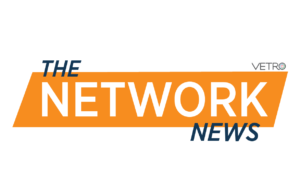More federal funds are on the way for broadband infrastructure.
Internet Service Providers (ISPs), electric co-ops, and other stakeholders need to prepare themselves with all the knowledge and tools they can muster.
On the heels of the Capital Projects Fund, Congress passed the Infrastructure Investment and Jobs Act in early November. An unprecedented $65 billion of the bill was earmarked for projects related to broadband. Of that, the vast majority was accounted for in the Broadband Equity, Access & Deployment Program (BEAD), which allocates $42.5 billion for state broadband infrastructure grants.
The BEAD is larger than all previous US broadband grant programs combined. With such an investment comes questions. Who is eligible for funding? What is the grant process? Are there any specific federal requirements for service providers?
Let’s examine some of the high-level details from the newest federal broadband infrastructure investment. We’ll follow up with more specifics in the second article in this series.
Related Content: How Broadband Infrastructure Fits into the Treasury’s Capital Projects Fund
Who will administer funds?
States will play a key role in the deployment of BEAD funds, and have their say into which projects, and therefore which ISPs and coops, benefit from approved grants.
Many leaders at the State level have requested more autonomy with the deployment of federal broadband infrastructure funds. In response, BEAD affords state governments additional flexibility in selecting grant winners. It’s important for subrecipients to know that each state will likely have a unique strategy for awarding grants based on their specific needs. Some may prefer large ISPs as subrecipients, while others will emphasize smaller, local organizations.
Funds will be administered through the National Telecommunications and Information Administration (NTIA). The NTIA will then provide states with funds for broadband deployment. At least $100 million will be deployed to each of the 50 states, and territories like the U.S Virgin Islands and Puerto Rico will also be included.
Who qualifies as a subrecipient?
BEAD includes cooperatives, nonprofit organizations, public-private partnerships, private companies, public or private utilities, public utility districts, and local governments in its list of those eligible as subrecipients.
It’s likely that states will have to decide between larger ISPs and local organizations when their proposals overlap. Competition will be significant, and subrecipients that contribute tools and strategies that aid their state-level partners will prove more attractive at the grant proposal stage.
What types of broadband infrastructure projects are covered?
BEAD focuses on broadband deployment to help connect unserved and underserved areas. Priorities for grant selection include existing broadband speed in the area in question, expediency of deployment, and demonstrated compliance with federal labor and employment laws.
To ensure effective broadband infrastructure deployment, BEAD specifies that grants must fund networks that offer minimum speeds of 100 megabits per second (Mbps) for downloads and 20 Mbps for uploads.
Broadband deployment and equity are the main focus of the funding. Part of increasing state autonomy involved making up to 5% of state allotments available for tools that support the planning and building of broadband networks, including data collection, staff support, and local outreach and training.
Related Content: Capital Projects Fund: Reporting, Requirements, & Responsibilities for Recipients
What does the funding process look like?
Grants cannot be deployed until the Federal Communications Commission (FCC) completes its revamped broadband mapping process. Upon the FCC”s completion, which will likely take place in 2022, the NTIA will notify states of their exact funding pool and invite them to submit proposals.
States will have to submit a letter of intent, initial proposal, and final proposal in a three-step process. Beyond the $100 million slated for each state, the remaining $37 billion of the BEAD will be distributed based on each state’s percentage of unserved broadband locations. This makes it more important for states and subrecipients to have accurate, up-to-date information on coverage, connectivity, and speeds.
VETRO’s Value
BEAD places emphasis on each state’s ability to maintain accurate data by allowing funds to be used for data collection and collaboration between states and local organizations. eEffective tools for measuring and employing broadband infrastructure projects will increase the likelihood of approval for grant proposals
A centralized data repository that serves as the platform-of-record can help states and subrecipients navigate the grant proposal process, and also ensure a more strategic progression between designing, building, and operating new infrastructure. Such a system reduces the risk of “documentation debt”, in which reporting results back to the federal government becomes difficult due to a lack of data organization throughout the project.
VETRO FiberMap, an internet infrastructure intelligence platform that simplifies and empowers every stage of the network lifecycle, gives ISPs, cooperatives, and local entities the ability to view meaningful, easily-communicated, project-specific data through a single platform.
Sign up for a demo to see VETRO’s value as a tool eligible to be covered by BEAD funds.
